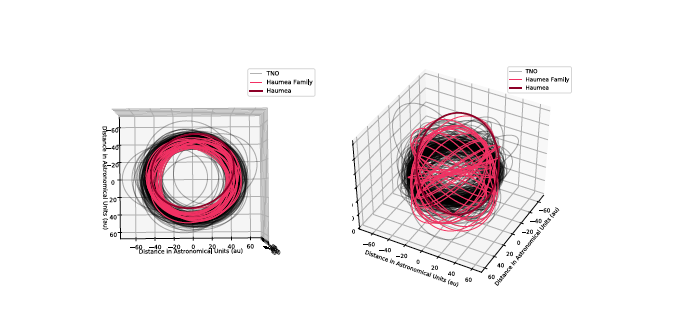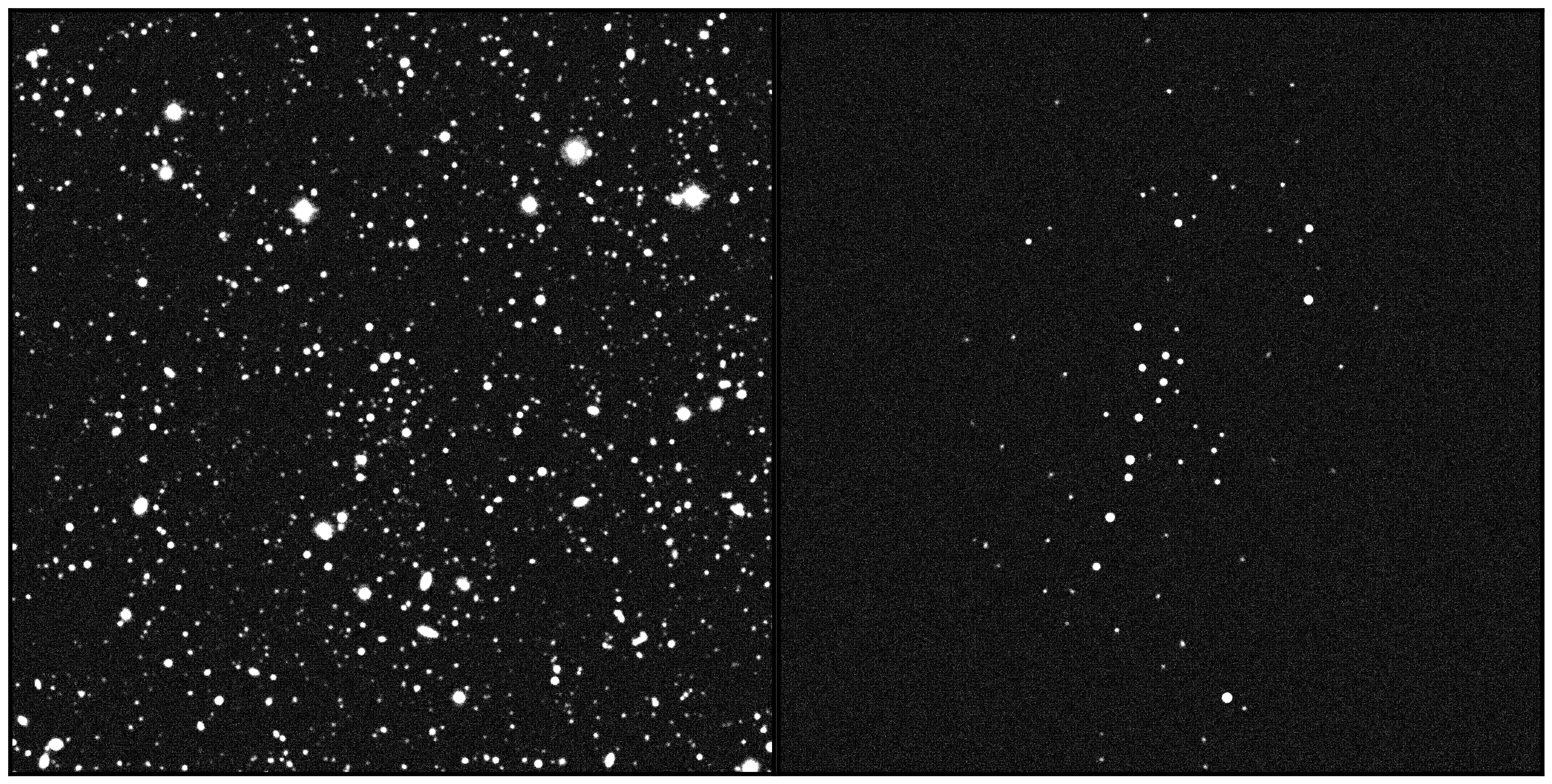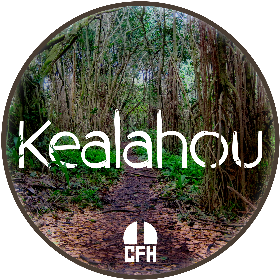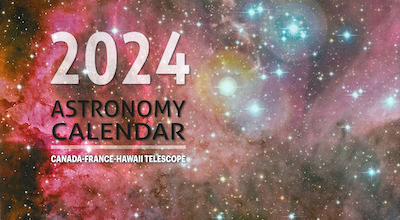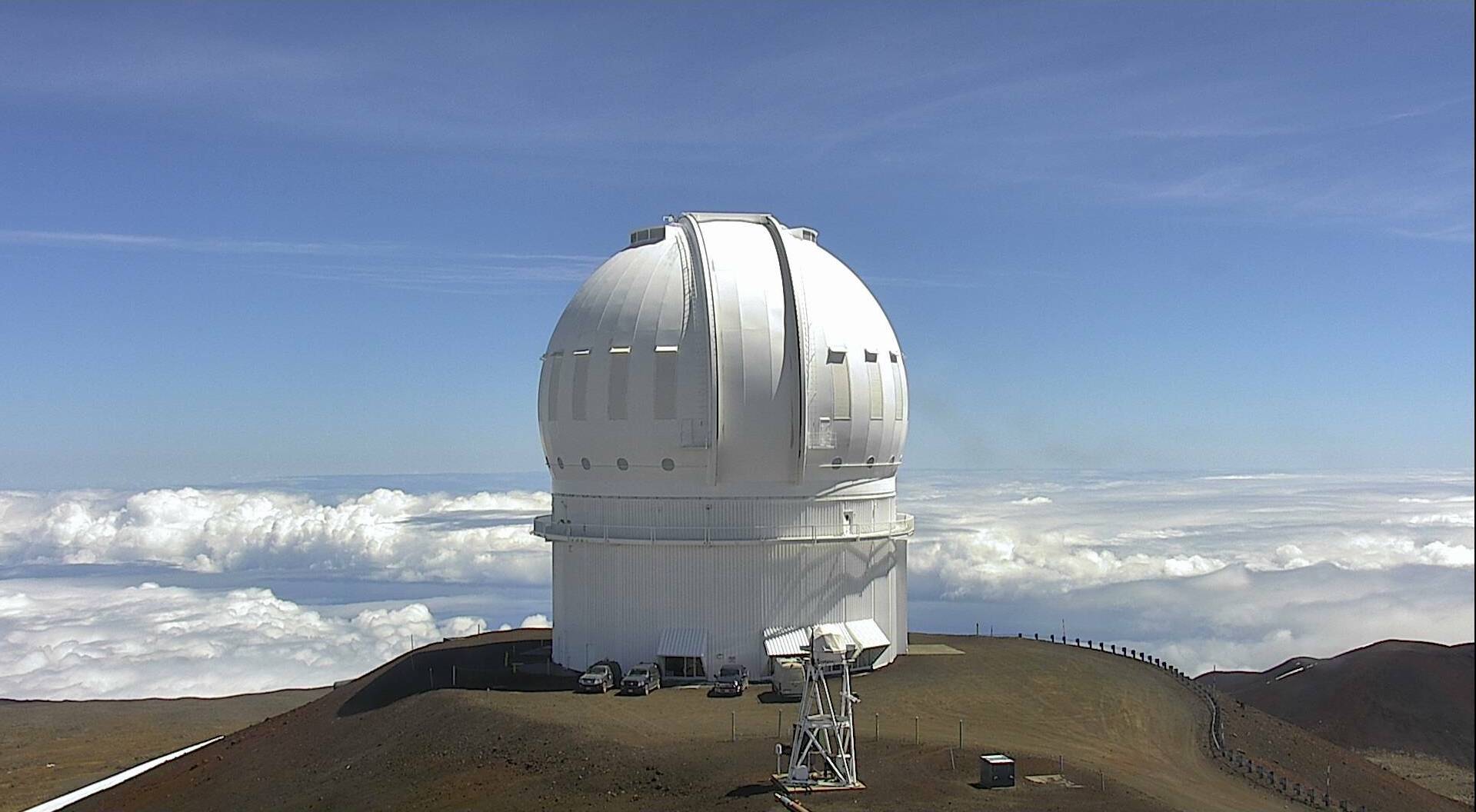A Search for Distant Collisional Remnants
The Outer Solar System Origins Survey team searches to understand the Haumea Family
The distant Solar System contains a large reservoir of objects beyond the orbit of Neptune, which are the icy remnants of planetary formation. These small icy bodies are challenging to discover, but their orbital properties and surface composition provide critical information about the formation and evolution of the Solar System. The Outer Solar System Origins Survey (OSSOS) and its companion surveys
(CFEPS, HiLat, Alexandersen) covered 1,209 square degrees and discovered more than 1,000 trans-Neptunian objects (TNOs). The main surveys were conducted using the Canada-France-Hawaii Telescope on Maunakea.
Hidden among this large number of discoveries are three objects which may belong to the Haumea family. Named after the dwarf planet of the same name, the Haumea family of objects are thought to have formed as the result of a collision several billion years ago. Called a collision family by astronomers, the family members are identified by their similar orbital elements and surfaces which display water-ice. The namesake object, Haumea, was named after the Hawaiian goddess of childbirth, an homage to Maunakea where Haumea's moons were discovered.
While the asteroid belt contains more than 100 collisional families, only one family has been identified in the Kuiper belt. The Kupier Belt is a region of our Solar System located 30-50 times more distant than the Earth from the sun. Understanding the collision which created the Haumea family provides critical information about the types of collisions which have occurred in the Kuiper belt, and potential insight into how to best search for additional families of objects past Neptune.
A recent paper in Nature Astronomy written by Rosemary Pike from ASIAA and the OSSOS team shows surprising results for the Haumea family. The OSSOS team discovered three potential Haumea family members significantly brighter than the survey limits.
"Based on our discovery of these three large objects, we expected to find 10-30 smaller Haumea family TNOs" said Rosemary Pike, lead author of the Nature Astronomy paper. "We didn't find the smaller objects which gives us important clues about the formation of the Haumea family"
Pike and the team carefully tested the survey sensitivity and models of the orbital distribution of the Haumea family, and determined conclusively that the Haumea family has significantly less small objects than the other TNO populations. They describe this result as a shallow size distribution in their model. The OSSOS survey has well understood discovery bias, so the team conducted the first statistically rigorous testing of the Haumea family size distribution, which provides the first robust constraints on how many small and large Haumea family members exist in the Kuiper belt.
Pike and the OSSOS team determined that the shallow size distribution of the Haumea family members is different from the size distribution of all other TNOs, important implications for the formation of this family. A shallow size distribution like the one seen with the Haumea family is produced by graze and merge simulations, where the impacting object grazed the proto-Haumea, slowed, and returned to collide again and merge with Haumea. The newly merged objects rotate quickly and shed material forming the other family members. However, the orbital distribution expected by a graze and merge collision does not match the known orbital distribution of Haumea family members. Rather the Haumea family has an isotropic orbital distribution. An isotropic orbital distribution results from a catastrophic collision, where the impactor is immediately destroyed. Catastrophic collisions produce a steep size distribution conflicting with the team's results. This conflict inspires future work on the Haumea family, which will focus on understanding possible formation scenarios which reproduce both the observed orbital and size distributions.
"The OSSOS team's long history of observations with Megcam here at CFHT and coordinated observations with Gemini Observatory means they really understand how their discovery of these three reflects the number of Haumea members in Kuiper Belt," says Todd Burdullis, QSO operations specialsts at CFHT. "Their discovery about the formation of the Haumea family add to the long string of great discoveries about the outer Solar System from CFHT".
Additional information
This research is presented in Nature Astronomy (https://www.nature.com/articles/s41550-019-0867-z) as “ A dearth of small members the Haumea family revealed by OSSOS” by Pike et al. The team included Rosemary Pike (ASIAA), Benjamin Proudfoot (Bringham Young University), Darin Ragozzine (Bringham Young University), Mike Alexandersen (ASIAA), Steven Maggard (Bringham Young University), Michele Bannister (Queen’s University Belfast), Ying-Tung Chen (ASIAA), Brett Gladman (University of British Columbia), JJ Kavelaars (NRC Herzberg), Stephen Gwyn (NRC Herzberg), and Kathryn Volk (University of Arizona LPL)
Media Contact:
Mary Beth Laychak
Canada-France-Hawaii Telescope
808-885-3121
laychak@cfht.hawaii.edu
Science Contact
Rosemary Pike
ASIAA
repike@asiaa.sinica.edu.tw


